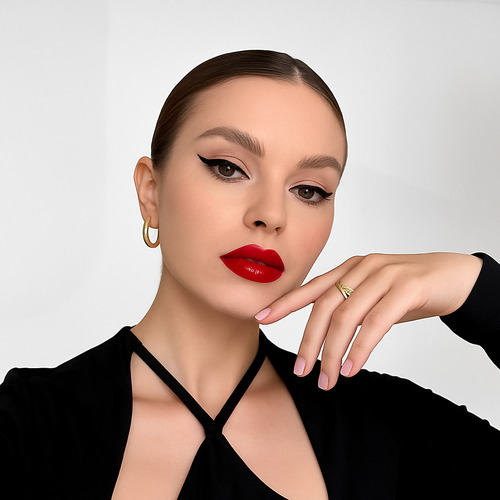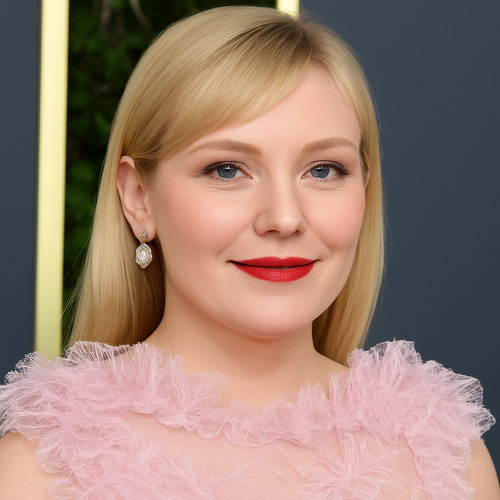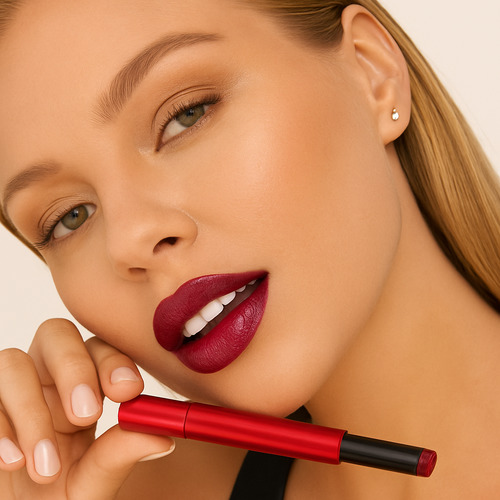Finding your perfect red lipstick shade can sometimes feel like an endless quest. If you already have a collection of nearly untouched red tubes, you are definitely not alone. The goal is to find the red that’s just right — not too cool, not too warm, but perfectly balanced. Fortunately, there’s a tool that can significantly simplify the search for your ideal shade: color theory.
Color theory in makeup is the art of working with color combinations that help enhance natural beauty and highlight your unique features. At its core is the color wheel, which shows complementary shades and guides you on which colors can enhance your natural eye tone, harmonize with your skin tone, and create a polished, complete look.
Below, you’ll find everything you need to know about using color theory to choose the perfect red lipstick, as well as the best shades for each seasonal color type: summer, spring, autumn, and winter.
What is Color Theory?
Color theory is a harmonious blend of art and science. It studies how colors interact with each other, influence perception, and create mood. In color analysis, these principles help determine shades that naturally complement a person’s features, allowing them to look more vibrant, feel confident, and comfortable.
Color Theory and Beauty
Today, color theory is experiencing a true renaissance and is becoming increasingly popular in the world of fashion and beauty. It helps people understand which shades highlight their individuality and look the most harmonious. Color theory is in demand because it allows for the creation of expressive looks, where colors either perfectly complement each other or contrast dramatically. It’s like a little secret that makes choosing ideal combinations for clothing and makeup much easier. Moreover, the process of selecting shades can be engaging and inspiring: properly chosen colors make a look complete and balanced. Beauty and fashion are forms of self-expression, and understanding color theory makes that expression more conscious and stylish.
Why Red Lipstick Remains a Symbol of Allure
Color theory is a reliable tool for choosing the perfect red lipstick—a task that is famously not easy. A personalized color analysis, based on the principles of color theory, can help you select red shades that complement your eye color, even out your skin tone, and keep your face from looking heavy.
Nothing is more transformative and mood-lifting than a simple swipe of a brush with red lipstick. This color completes an outfit, especially when its shade echoes your clothing or accessories. Red is a bold and powerful color, symbolizing passion, confidence, and strength. It visually whitens teeth and almost always draws compliments.
In an era when Old Hollywood style remains relevant, red lips are a simple and striking way to embody this look. They are universally attractive: luxurious, expressive, and seductive, evoking associations with classic and timeless elegance.
The perfect red lipstick for your skin tone
Winter color type
The best red shades for a winter color type are cool and bright tones. The winter color type is perfect for striking accents: think of a classic “blue-based red.” There are two options: a red with a blue base or a true classic red with a barely noticeable orange undertone. Blue-based reds look especially flattering on very pale, cool skin and also harmonize well with darker tones. Classic red with a slight orange undertone adds warmth to most color types.
Spring Color Type
For the Spring color type, a red with a coral-pink undertone is ideal — fresh, light, and cheerful. Focus on a subtle nuance, avoiding overly intense shades. A semi-transparent pink-red hue enlivens the face while remaining unobtrusive and natural. Spring reds should be bright and warm, so lipsticks with a hint of orange or classic red shades will look particularly harmonious.
Summer Color Type
The Summer color type is usually characterized by soft, muted contrast, so a bright red shade may appear too harsh. Instead, it’s better to choose cool berry tones with subtle pink undertones: they make the look expressive without overwhelming it.
For skin with cool undertones—pink, blue, or violet—cherry shades are especially suitable. These shades look natural and harmonious, while still being rich enough to highlight individuality.
For skin with cool undertones—pink, blue, or violet—cherry shades are especially suitable. These shades look natural and harmonious, while still being rich enough to highlight individuality.
Autumn Color Type
For the autumn color type, shades of red with a subtle hint of brown are ideal. These colors harmonize beautifully with the palette of fallen autumn leaves, while the slight brown undertone softens the red, making it calmer and more versatile.
People with an autumn color type have a deep, warm, and rich skin tone, so shades with greater depth and texture are especially a successful choice.
People with an autumn color type have a deep, warm, and rich skin tone, so shades with greater depth and texture are especially a successful choice.




